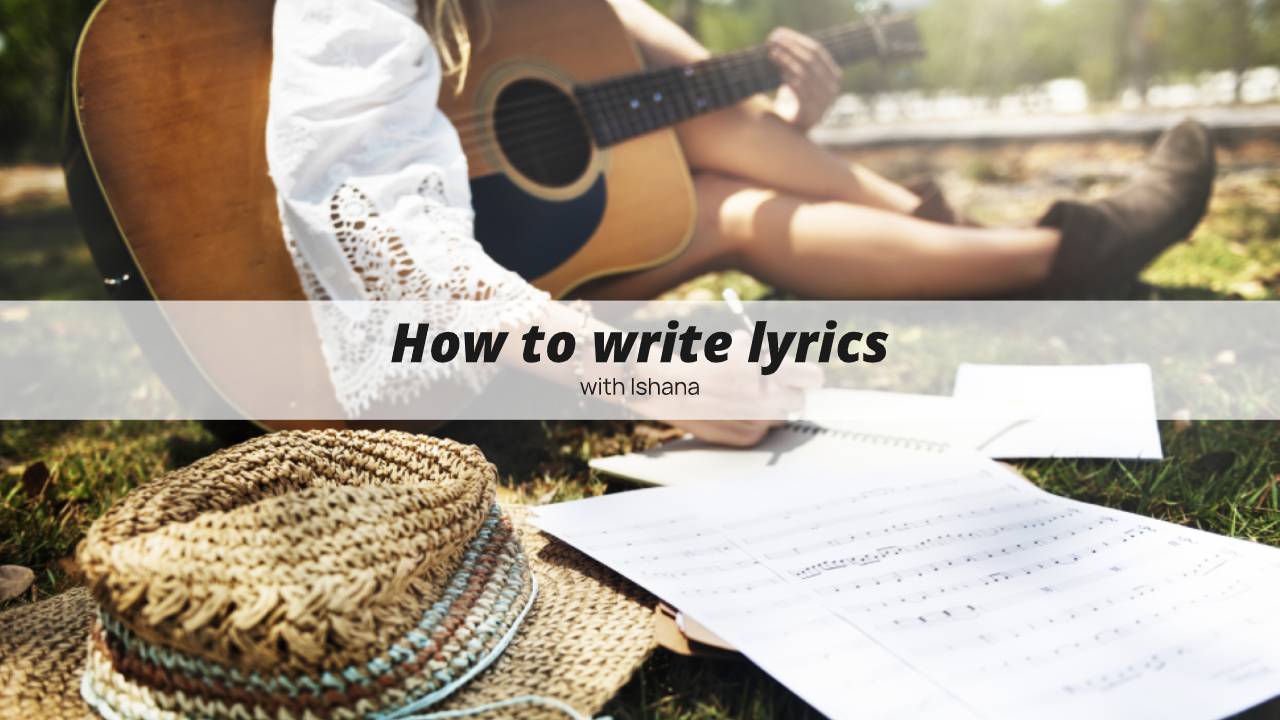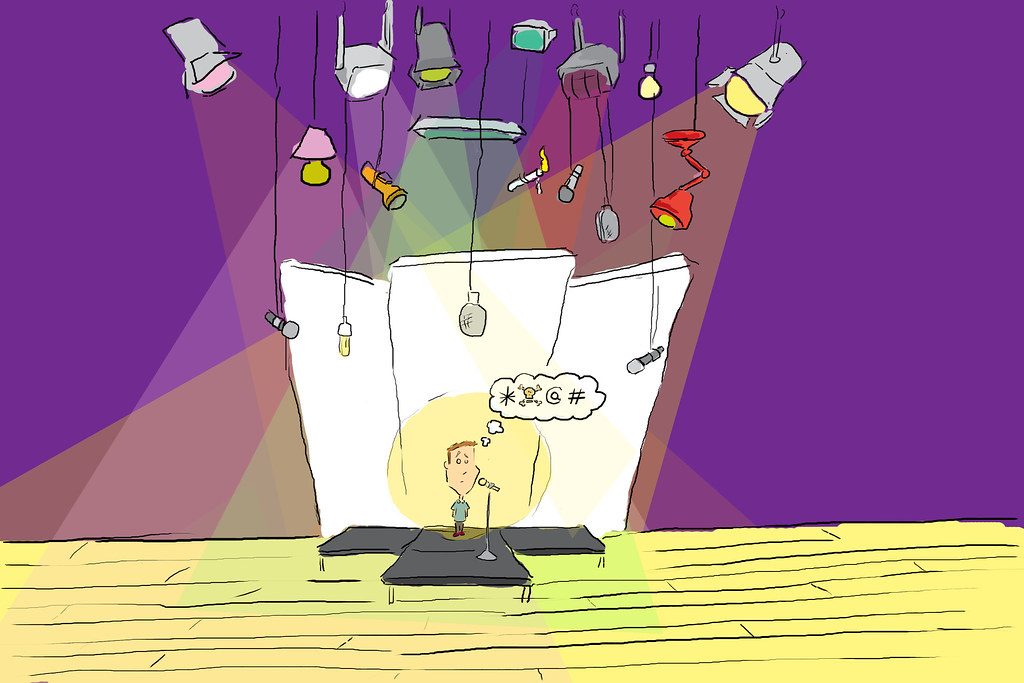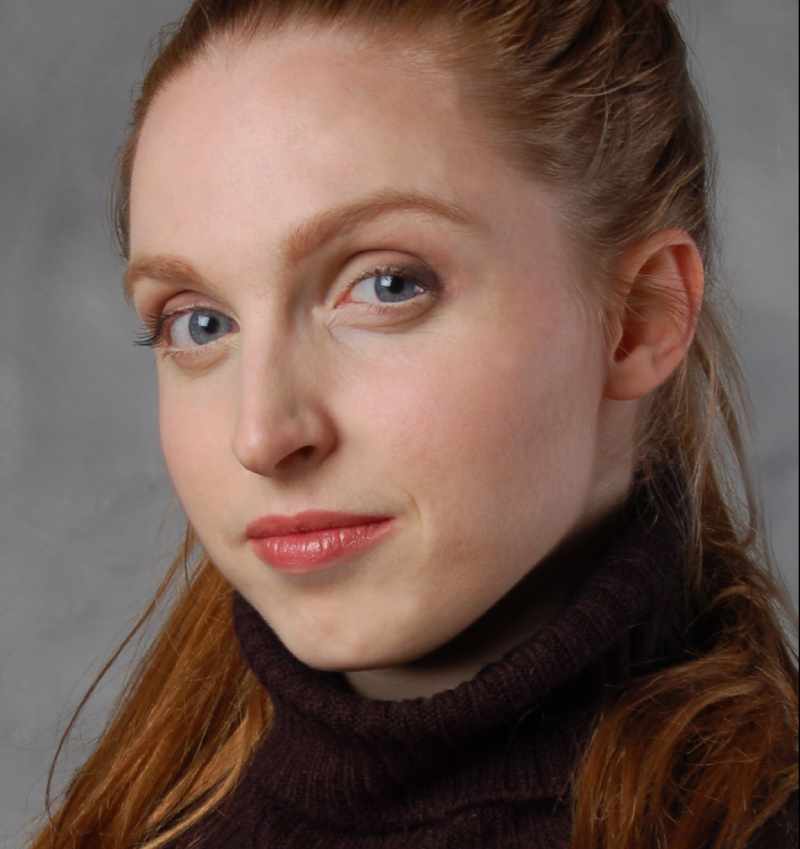
Hi, I’m Ishana! I am a singer songwriter from Montreal Quebec in Canada. I teach singing lessons and songwriting, I write children stories, and I also produce my own music.
Today I’d like to teach you how to write great lyrics and create your own songs. I’ve been writing songs since I was 14 and I’d like to share with you the process that I’ve developed and that I teach my students. Hopefully you’ll be able to use these songwriting tips to help you get started and learn how to write songs on your own.
The 5 Step Songwriting Process
Writing songs isn’t always a linear process. I see a song kind of like a puzzle or a cloud that’s floating in front of you. Ideas come floating by and you just have to catch it while it’s there. During these moments of inspiration the seeds of a song are born. The following tools will help you to begin transforming those ideas into actual songs.
1: Record ideas on your phone as they come
Ideas for songs often come unexpectedly. That’s why it’s a great idea to use your phone to record these ideas so you can work on them when you’re ready. Ideas might come in many forms. They can be a thoughtful insight, a sentence that rhymes, a rhythm or groove, a melody, or any of combination of these. For me, I record ideas when I feel there is a nice ring to it, it’s fun, or I feel an emotional connection to it.
2: Morning pages
There is a great book called the Artist’s Way by Julia Cameron. The book follows a 12-week program with weekly exercises that help you create from a deeper place within oneself. I highly recommend doing this program because it can serve as a catalyst for personal healing, growth, and change. I believe that it is through the empowered and healed self that the best art can be channelled.
The Artist’s Way by Julia Cameron
Write 3 pages a day
One of the most well known practices of Julia Cameron’s book is the Morning Pages. Doing the Morning Pages is simple. You write down three pages of free-flow writing. And that’s it! There are no rules. Just start writing whatever comes to mind, may it be as mundane as “I have to take my dog out for a walk after writing these pages” or as poetic as “My sorrowed heart has once again found love!”
There is no rhyme or rhythm. But there can be! It is stream of consciousness writing, and the only rule is to do it until you have three pages worth of writing down on paper.
3: Song Structure
It’s important to understand a little bit about song structure. Song structure will provide the framework for you to fill in the gaps and complete the puzzle that is your song. I write pop music so a common structure that I use is verse, pre-chorus, chorus, then repeat. Then bridge and one final chorus to finish.
Choose a song that you like and try to notice the different patterns and structures that a recurring. Once you’ve identified how the song is structured, you can try to use that same structure in a song of your own.
4: Rhyme Schemes
Understanding rhyme schemes can be a great way to learn how to write lyrics. A rhyme scheme is the pattern in which the phrases in your song rhyme with each other. There are many different patterns that you can use such as AABB or ABBA or ABAB.
To illustrate, let’s take the great song Sounds of Silence by Simon and Garfunkel which follows AABBCC. Notice how the words at the end of each sentence with common letters rhyme. This rhyme scheme is consistent through each verse on the song.
Hello darkness my old friend – A
I’ve come to talk with you again – A
Because a vision softly creeping – B
Left it’s seeds while I was sleeping – B
and the vision, that was planted in my brain – C
Still remains – C
Within the sound of silence.
A great exercise to get started
One of the first exercises I did was to take a song or find music samples I liked and rewrite the lyrics. It helped me notice things in more detail, kind of like taking a magnifying glass to the song. I noticed things that I wouldn’t have notice had I only listened to it.
I recommend you do the same with part of a song that you like. This can be a great way to get started and build up your ability to write words and phrases using rhyme schemes.
A good tip
Sometimes when I’m writing a song and I don’t know what the next line is going to be, I just try to think of what rhymes with the previous phrase. Then I think “which word would make sense in this context?” Sometimes I’ll use Google to find ideas and to look up definitions and synonyms
“Don’t forget that with good lyrics, the rules are meant to be bent a broken. You can mispronounce a word that doesn’t rhyme to make it rhyme or even create your own rhyme scheme patterns.” – Ishana
5: Chord Progressions
A chord progression is the repeating pattern of chords that accompany your lyrics. In my songs, I often repeat the same chord progression for the verses and then rearrange the order of the chords in the chorus.
When I write songs, I often write song lyrics first and then I come up with a chord progression after. Other times I come up with a chord progression first and then use it to structure their lyrics. There is no right or wrong way to do it. Try different approaches and see what works best for you.
Getting it done!
Although songwriting isn’t always a linear process, it’s important to have a clear intention to write a song and schedule time on a regular basis to work on it. If you don’t do this then your songs will just stay ideas and never get created. So roll up your sleeves and start writing!
My Song: Heatwave
This is a song that I wrote called Heat Wave. You can use the PDF below to see how I structured the song with verse, pre-chorus, chorus and the rhyme scheme that I used in the verse ABBBA. You’ll notice that the words only loosely rhyme, but it still works!
HeatwaveHow do you know if you have a “good idea” to write a song about?
If it’s fun to sing or if you feel like sharing your idea with someone and you think “Oh this is cool, I have to share this” then you probably have something that you will stand behind. If you feel yourself drawn back to it again and again then you know that you have a “good idea.”
“Always trust your instinct first and make music for yourself.” – Ishana
Where can I draw inspiration to write lyrics?
One thing that inspires me to write lyrics are the emotions that I’m going through. For me songs and lyrics are based on internal things I’m experiencing rather than external situations. Two recurring themes that emerge in my songs are following your dreams and being brave enough to do that as well as getting out of depression and anxiety. You don’t have to only write love songs!
“Writing lyrics is an art form. In my opinion, lyrics should depict truth, either in how your feel or the truth of a situation. With the purpose of clarity, healing, helping, empathizing, and celebrating the truth.” –Ishana
Use morning pages to draw inspiration on how you feel about the world around you and then try to base your writing on that. That process will help you find your voice and light the way to inspiring others.
Sign up for lessons with me
If you’d like some help either writing songs, singing, or playing an instrument I would love to offer you my services. Feel free to click on the link below. I teach music with Musiprof and my students have been getting awesome results. I am really excited to meet you in the future! My music lessons are taught in Montreal, Canada or online anywhere in the world!
You can also write me private message to get more information about my lessons.
Also, if you are looking for a singing teacher in Montreal, Toronto, or Vancouver, visit these pages.




